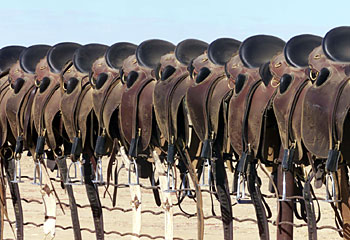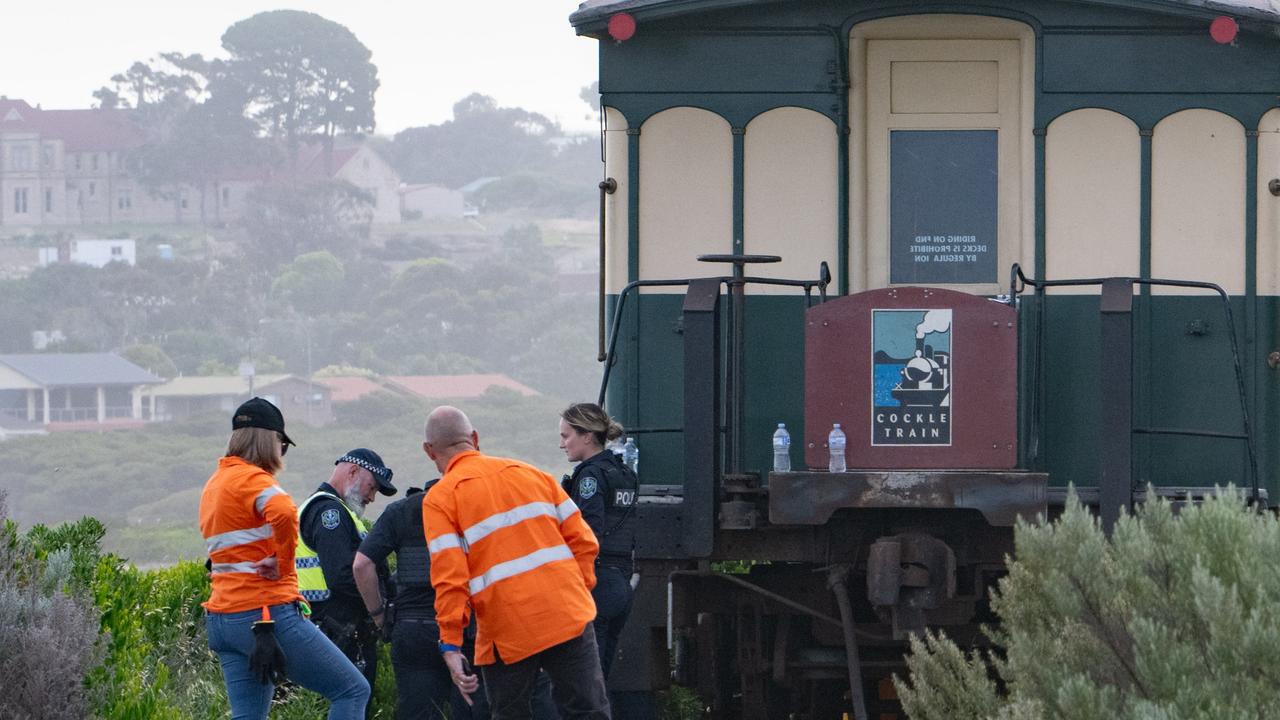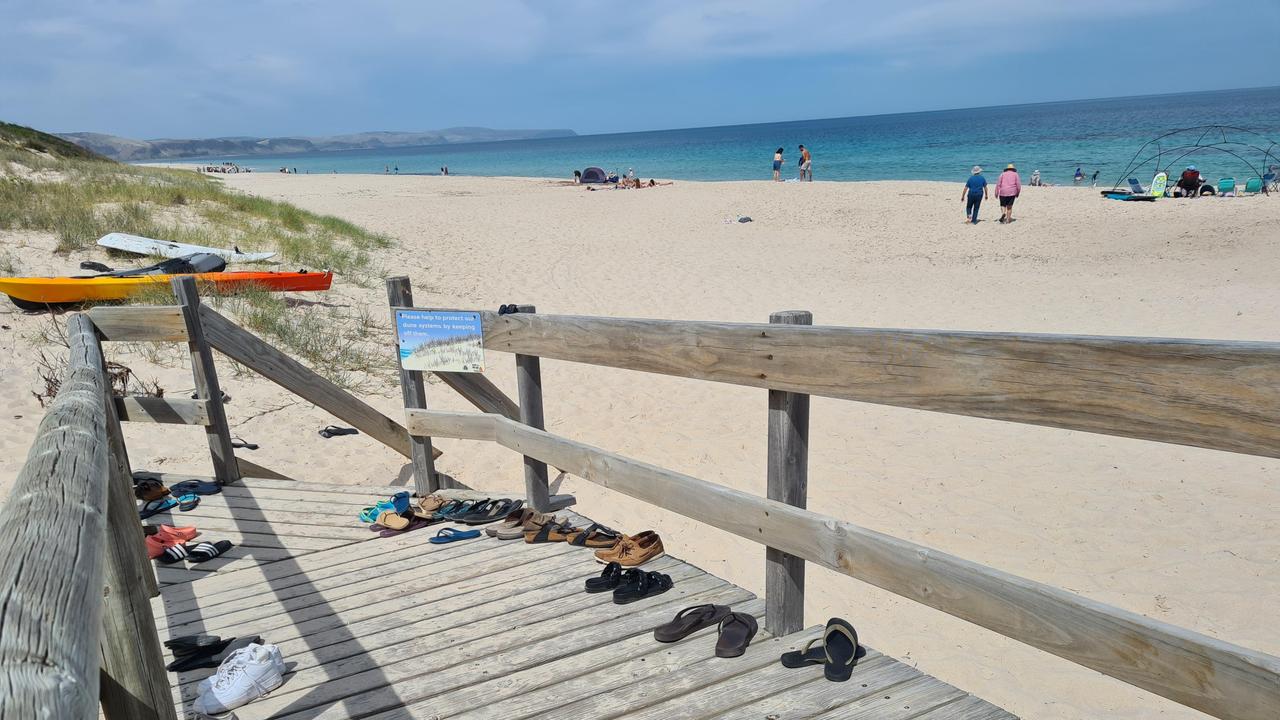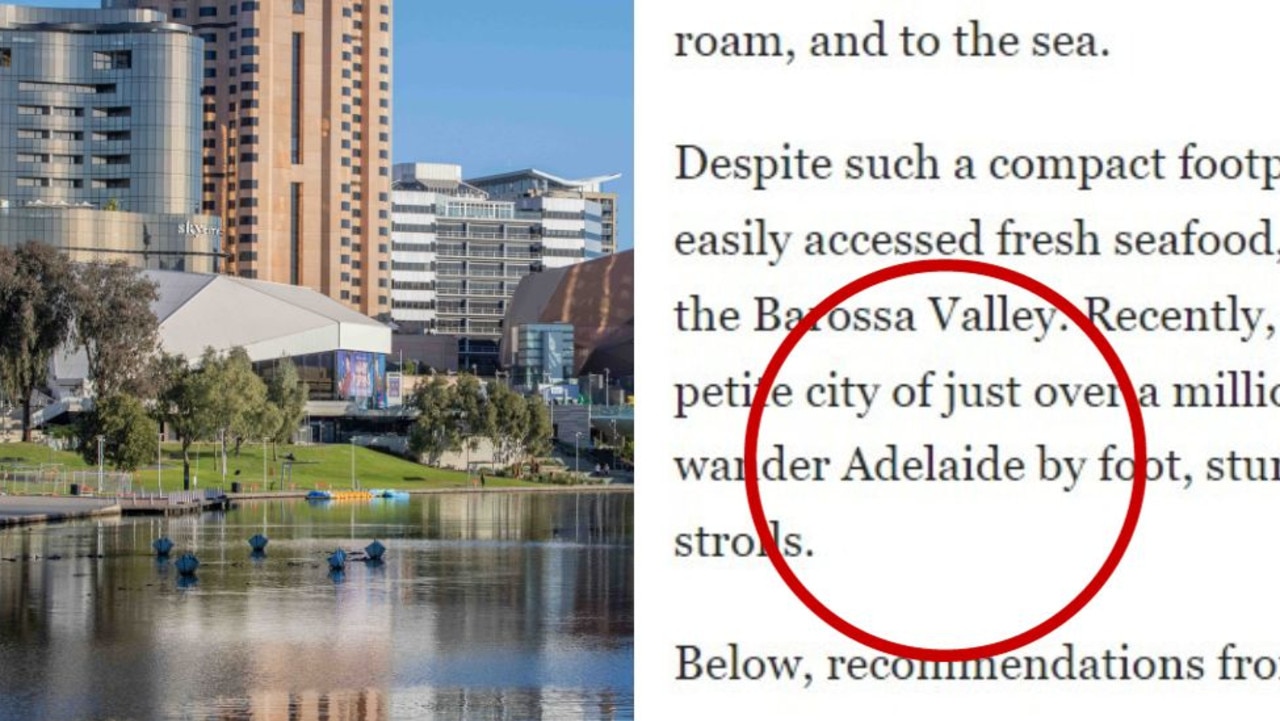Ticket to ride on Outback cattle drive
CITY born and bred, but with her heart in the bush, Heather Caddick saddles up to move a mob of 500 cattle for the Great Australian Outback Cattle Drive.

CITY born and bred, but with my heart in the bush, I jump at the chance to join this year's Great Australian Outback Cattle Drive. Guests are invited to ride with the drovers, moving a mob of 500 cattle from Oodnadatta to Maree, with each sector taking five days. We choose the Lake Eyre sector.
Staging cattle drives was the brainchild of well-known bushman Keith Rasheed who, when chatting with some mates years ago, bemoaned the loss of the old cattle culture and skills of droving, replaced by motor bikes and road train transport.
A rush of horses through the trees
A sound of stock whips on the breeze
The drover's life has pleasures
That the townsfolk never know
Banjo Paterson
So the first cattle drive evolved in 2002; a well-publicised drive in 2005 has made this extraordinary experience known worldwide, attracting a large contingent of international guests and media, and emerging as a tourism showcase for outback Australia.
There are 67 guest riders on our sector, skirting Lake Eyre South and traversing the immense Anna Creek Station, the old Ghan railway line, and the 5400km-long dingo fence built to divide cattle and sheep country and to keep out dingoes.
My itinerant mountain-climbing son has arrived in Adelaide to reconnect with family so the two of us will join the drive, setting off by plane to Roxby from Adelaide and then to Curdimurka, two hours by road from Roxby Downs. This gorgeous country is bright with rich green patches and silvery creeks that carve the ochre red earth after recent rains. The water has not reached Lake Eyre South, which is a white and barren sea of salt, an endless wave of deadly mirages.
We arrive at the site to discover this is not a rough and tough outback camp; it is cleverly fused with luxury. We are met by young volunteers, dressed in red monogrammed rugby shirts and Akubras. Some are TAFE students with a friendly attitude that creates a happy spirit for the camp.
The campsite centre has a marquee that seats 100 and a separate camp library containing books on flora, fauna and history and maps of the region.
Adjoining the marquee is a drinks van, shaded by colourful umbrellas with bar tables, while in the central square is the campfire site, a great place for a sundowner or three and the chance to yarn with drovers and Aboriginal elders after the day's ride.
The tents are carpeted and bunk beds have cream sheets with chocolate-coloured doonas and comfy pillows. There are crisp white towels and a hook-stand for clothes, with halogen lanterns for after dark.
Thoughtful organisers have provided earplugs to block out the cacophony of snores, in case one is tempted to take a cattle prod to jet-engine offenders.
Goodie bags have been cleverly designed, with a bum bag for our day in the saddle monogrammed with the cattle-drive logo and containing a water-bottle pouch, sunscreen, plastic raincoat and a licorice treat for the horse. It fits well and has a tidy clip.
Various Australian tourism bodies have been involved with the development of the cattle drive and should be congratulated for the brilliant concept of the shower and loo trailers, with clever use of space. Our clothes will not be sprayed by the shower and there are ample hooks and shelves in the cubicles. Large mirrors, hand basins and hair dryers are also in the shower trailer.
The loo trailer has flushing toilets that would do Kenny proud; no long drops here. The hand basins have hot water and there are mirrors and hooks.
We park our bags and change into jodhpurs, pick up our riding helmets and are bussed out to meet the drovers, strappers and our horses. Each guest has been matched with a horse from Anna Creek Station, a vast Kidman property. We are paired with Stewart Nunn, who recently retired as manager of Anna Creek, and Rodney, one of the chief drovers, spent 35 years on this cattle station.
Darryl Bell (known as the Boss), his daughter Shannon and a fleet of young drovers will be our leaders and mentors for the drive. Drovers and stockmen are the kings of the outback, with skills that leave us gasping. They ride as if fused to the saddle, using strength and courage to deal with breakouts, cracking stockwhips with precision to round up stray beasts.
I am introduced to Wess, a 16-hand chestnut, my horse for the next few days. Step blocks allow for easy mounting, and strappers help and guide us through the yards. The cattle are released and start to move. Rodney instructs us to border the mob, walking at a gentle pace behind, to allow the drovers to gallop, crack whips and direct the traffic.
This afternoon's introduction to droving allows us to get to know our horses and relax about what is expected. We adjust to the sounds and smells of the mob and the fine red bulldust and marvel at the intoxicating beauty of the country and the sense of freedom and space. The logistics of the drive are daunting. There are water troughs on trucks that move behind the mob and lunch sites that are set up each day for guests, with a marquee and smorgasbord, a campfire and benches to allow for a two-hour break before the afternoon drive. We dismount and take our horses to water. They are given nosebags and corralled for the night. We are bussed back to camp to use the shower trailers and meet at the campfire for a black rat (Bundy and Coke in a can), watching the slow-setting sun streak the sky orange and red.
Dinner is a feast of roasts, vegetables and salads, with sticky date or chocolate fudge puddings and ice cream to follow; all is beautifully displayed, buffet style, and partnered with good wine. Trestle tables and benches allow everyone to mix and match at every meal.
Guests are mostly Britons, Americans and New Zealanders, with local horsey people, cattlemen and city slickers such as us, old and young. The atmosphere is inclusive and friendly, and drovers, volunteers, station owners and bush legends alike mingle and yarn with us all.
After dinner, Reg, an Aboriginal elder from the Arabunna people, may play his guitar or a group of drovers sing country music under arguably the clearest view of the Milky Way in Australia.
Most guests are happy to sink under their doonas early, as there is a 6am bugle call to rise for breakfast and a 7.30am departure for droving. Breakfast is another feast, complete with the joy of brewed coffee or excellent tea.
By 8.30am, Wess and I are riding with the mob, and not only do I feel part of the drive but that I was born to drove cattle. During the next three days we move through the ochre-red pebbles of gibber country, the mulga and mallee.
We slowly cover 14km each day. The mind fills with different priorities: cattle, horses and the terrain. There is time to talk, to listen and to think, interspersed with adrenalin-stirring incidents.
The mountain man's horse is spooked by a water truck shuddering past us as we move the mob alongside the dirt road to Maree. It bucks in a classic Butch Cassidy pose and he just manages to stay in the saddle. Sue from England has to jump free when her mount decides to roll in the sand while crossing some dunes. We watch, impressed as she remounts, learning that horses, if allowed, will behave like naughty children.
We see a drover gently carry a newborn calf to rest it in a ute. The calf is later returned to its mother, strong enough to walk with the mob. Meanwhile, Wess, I discover, is addicted to Mitchell grass and will disregard any direction from me if he happens to spot the long and delectable straw shoots. But he is a good stockhorse and it is exciting to work with him as he rounds stray cattle, moving deftly from left to right, ushering the beasts gently back to the mob.
It is a privilege to ride alongside Bell, the so-called Boss. He looks the part, with a stockwhip draped around his shoulder, his moulded bush hat like no other, and his stories coloured with wit and philosophy, gleaned from generations of droughts and floods, and the highs and lows of a hard-fought life that I doubt he would swap with anyone on earth.
This passion affects us all. On our final night at camp, a fireworks display competes briefly with the heavenly display of stars above, and I notice my mountain-man son is sounding more like a desert-plains cattle man. We have been gently but permanently branded and will be booking early for the next cattle drive from Birdsville in 2009.



